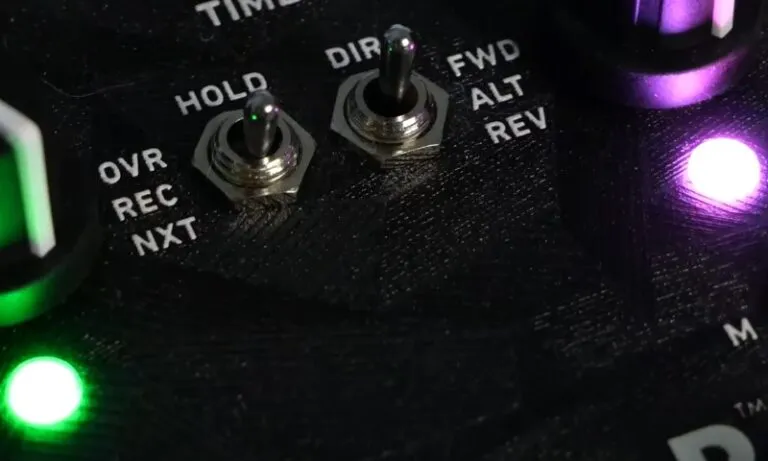Jelly Roll, born Jason DeFord, emerged from Nashville’s rough streets to become a powerhouse voice across:
- Country
- Hip-hop
- Rock
By 2025, industry insiders and fan blogs alike can’t agree on one thing: how much he’s worth. Despite the range, one thing remains certain: he’s turned past pain into a thriving career.
Let us take a look at what his net worth is in 2025.
Table of Contents
ToggleThe Numbers: What’s his Net Worth in 2025?
| Field | Information |
|---|---|
| Full Name | Jason Bradley DeFord |
| Stage Name | Jelly Roll |
| Date of Birth | December 4, 1984 |
| Age (as of 2025) | 40 |
| Net Worth | $12 million |
| Birthplace | Nashville, Tennessee |
| Astrological Sign | Sagittarius |
| Nationality | American |
According to available sources, Jelly Roll’s net worth is $12 million. However, we must say that calculating Jelly Roll’s net worth isn’t as straightforward as scanning a bank account. Therefore, we cannot be 100% certain.
Financial data tied to artists is often stitched together through public reports, industry estimates, and educated assumptions.
Those variations reflect more than guesswork, they point to an artist whose income streams are expanding fast and shifting constantly.
Growth doesn’t always come with clarity. Revenue pours in through multiple channels, some of which remain hidden from public view. Estimates may overlook a merch launch, delay calculating streaming royalties, or miss out on the fine print in tour contracts.
The Struggle Before the Spotlight
Antioch, Tennessee wasn’t a soft landing place for Jason DeFord. Violence and instability shaped his earliest memories. His mother’s battle with mental illness brought unpredictability to daily life.
His father, a bookie by trade, raised him in a world where hustling was more common than hugging. School was secondary. Survival came first.
By age 16, things took a dangerous turn. He was arrested for aggravated robbery, an act born out of desperation and poor influence. That first arrest led to a cycle he couldn’t easily break. The system didn’t forget his name.
- Over 40 arrests marked his record.
- Multiple stints in juvenile detention and adult jail left psychological scars.
- Education gave way to incarceration, with courtrooms replacing classrooms.
He became familiar with parole officers, probation terms, and courtroom benches. During those dark years, society labeled him a statistic. But somewhere beneath the surface, resistance to that label began to grow.
Every mistake hardened him. But not into someone bitter, into someone burning to change the narrative.
Prison to Purpose
Locked up, surrounded by noise and regret, he found silence in writing lyrics. Pen and paper offered something jail couldn’t take: expression. Music was more than an outlet, it was armor, therapy, and lifeline all at once.
He wasn’t handed a studio. He pieced one together with scraps. Using borrowed beats, secondhand microphones, and parking-lot distribution, he built his foundation. There was no marketing plan, just mixtapes and grit.
That era shaped his identity as an artist. No label. No producer. Just raw honesty and hard-won perspective.
- Hip-hop roots formed during incarceration.
- Mixtape releases that connected with those facing similar struggles.
- Street-level promotion through local shows and grassroots support.
Listeners didn’t just hear his lyrics, they felt them. He didn’t rap about luxury cars or bottle service. He rapped about loss, courtrooms, and clawing toward something better.
What started as a coping mechanism became his engine. Pain didn’t define him, it fueled him. And while success wasn’t yet visible, the direction was set.
Music as Redemption: From Mixtapes to Billboard
@officialjellyrollOnce again I was blessed with the opportunity to get to speak to some men whose shoes I remember being in and it was amazing. Thank you Riverbend for allowing us to bring a little therapeutic music to the yard.♬ original sound – Jelly Roll
Jelly Roll didn’t just use music to pass time, he used it to stay alive. Locked up in a cell, battling internal wars, and surrounded by noise that tried to drown out his voice, he found clarity in lyrics.
Mixtapes became his microphone to the outside world. They weren’t polished. They weren’t produced for mass consumption. But they were real. And that rawness set him apart.
Over 40 projects now live in his vault, each one a time capsule of where he was emotionally and creatively. “Ballads of the Broken” gave him momentum. “Beautifully Broken” catapulted him. Cracking Billboard wasn’t luck. It was sweat, scars, and strategy combined.
Genre boxes never held him. Country weaves through his acoustic tracks. Hip-hop dominates his older mixtapes. Rock pulses under many choruses. Mixing them wasn’t a gimmick, it was a natural extension of a man who didn’t fit any mold. Listeners didn’t just accept the blend, they demanded more.
- Gritty lyrical themes that span addiction, faith, redemption, and trauma
- Country ballads layered with hip-hop storytelling
- Rock energy without losing emotional vulnerability
- Seamless switches in vocal delivery, from rapping to melodic singing
Record Label Success
Signing with BBR Music Group wasn’t about selling out, it was about scaling up. With their backing, he gained access to broader distribution, professional marketing, and strategic collaborations. Instead of losing his rawness, he weaponized it. Labels usually polish. Jelly Roll stayed jagged, and fans appreciated that.
What changed post-signing wasn’t the message. It was the volume. Tour slots became headlining gigs. Radio started taking him seriously. Suddenly, people who had never touched a mixtape were buying albums.
Notable Hits
His catalog boasts tracks that read more like therapy sessions than radio singles. Pain is never hidden. Vulnerability is never blurred.
- “Son of a Sinner” – A haunting confessional that became his breakout anthem
- “I Am Not Okay” – A brutally honest reflection on mental health and public masks
- “Need a Favor” – A relatable prayer dressed in a catchy chorus
These aren’t empty bangers. They stick. People don’t just sing along, they remember how those songs made them feel.
Crossover Appeal
Hardcore country listeners found themselves nodding along with trap beats. Longtime hip-hop fans caught themselves vibing to acoustic twangs. The glue holding it all together was Jelly Roll’s honesty. He never catered, he communicated.
His crowd at any concert might include bikers, soccer moms, recovering addicts, and frat bros. The thread tying them together isn’t genre, it’s emotional truth. He became the artist for those who didn’t feel heard by radio trends or industry formulas.
- Stories feel personal but echo universal struggles
- Lyrics often mirror real-life battles with addiction, redemption, and grief
- His stage presence balances raw energy with vulnerability
Jelly Roll’s rise didn’t come through image crafting or algorithm gaming. It came through being seen and heard exactly as he is. Every project, every lyric, every performance? A reminder that music can heal, even when it hurts.
The Bottom Line
Jelly Roll had a transformation that doesn’t end with dollar signs. His rise from felon to festival headliner shows what happens when pain fuels purpose.
Each lyric holds a chapter, each stage appearance a declaration of survival.
As new tours launch and fans grow louder, one truth echoes louder than his basslines: Success tastes better when you’ve fought to deserve it.
Related Posts:
- Jack White's Wealth in 2025 - A Glimpse into His Net Worth
- Kendrick Lamar Net Worth in 2025 - Updated Report on…
- Eddie Levert’s Net Worth 2025 - A Closer Look at His…
- David Murray’s Net Worth in 2025 - Key Factors…
- 10 New Artists Who Turned Buzz Into Real Money in 2025
- How Hip-Hop Turned NBA Players Into Cultural Ambassadors












